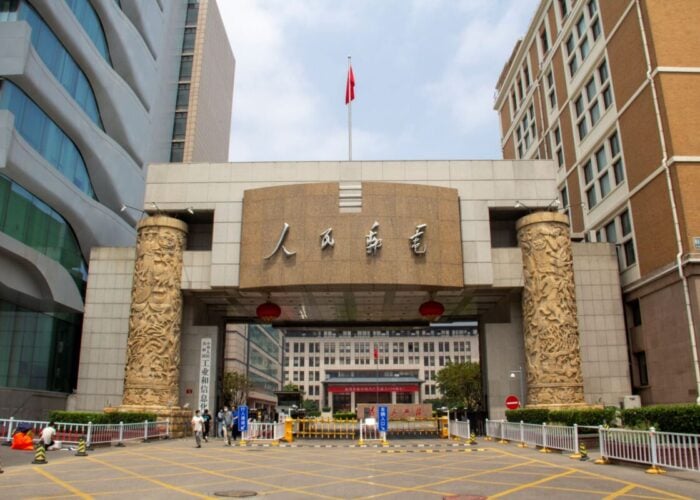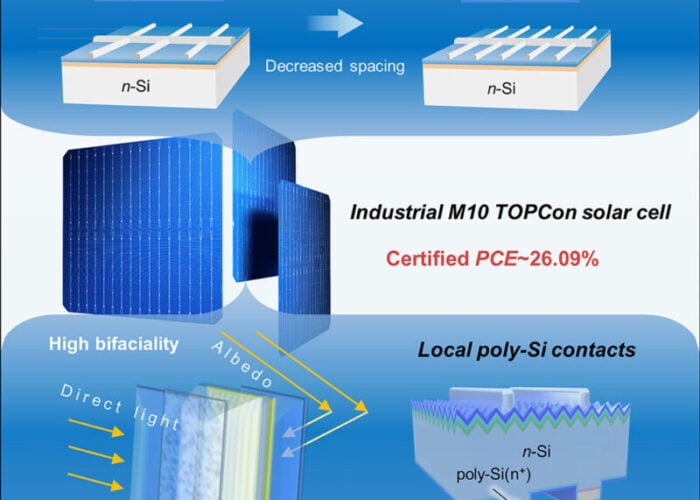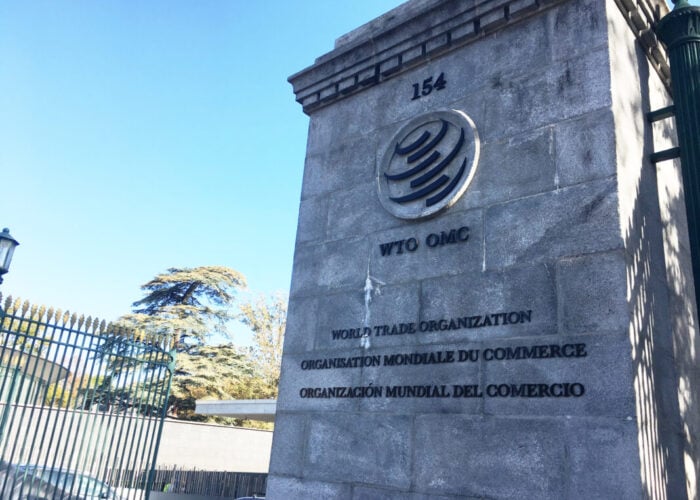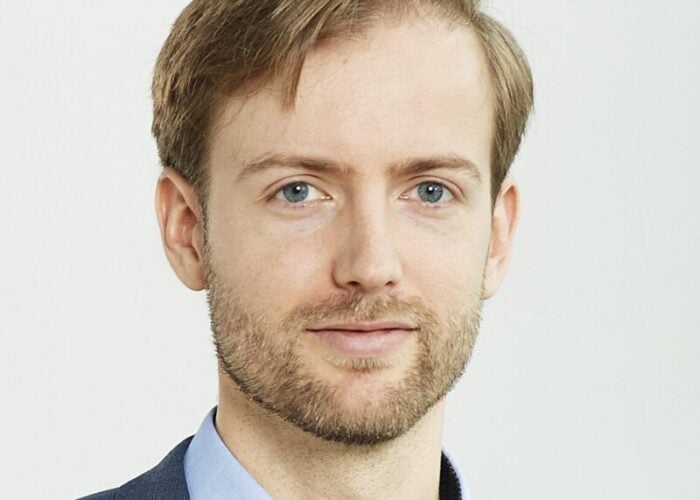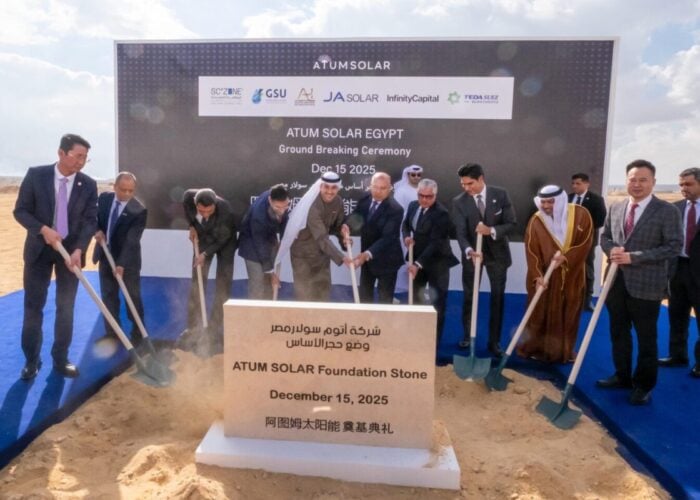
During the past few months, Tongwei has officially moved into the top-position as the leading solar cell manufacturer – by production volume – serving the PV industry.
The company will also be the first to produce more than 10 GW of solar cells in a single year, a feat likely to occur during 2019, ahead of strong growth that may see this doubling within just 3 years.
Try Premium for just $1
- Full premium access for the first month at only $1
- Converts to an annual rate after 30 days unless cancelled
- Cancel anytime during the trial period
Premium Benefits
- Expert industry analysis and interviews
- Digital access to PV Tech Power journal
- Exclusive event discounts
Or get the full Premium subscription right away
Or continue reading this article for free
Tongwei Solar is now redefining the whole basis of solar cell production, and is doing this with alarming efficiency across its investment plans, supply arrangements, and cost-reduction plans.
However, having a profitable business model as a pure-play cell manufacturer has eluded every company in the solar industry that has tried to go down this path.
This article reviews the failed attempts by many companies that have tried to make pure-play cell production their PV business model, and then outlines why Tongwei Solar’s approach may turn be the exception to the rule.
The article and discussion comes just days before the fourth PV CellTech conference in Penang, Malaysia on 12-13 March 2019, where the CTO’s and heads of R&D from all the leading solar cell producers today (including of course Tongwei Solar) will be presenting their company’s plans for multi-GW cell activity during 2019 and beyond.
The PV CellTech 2019 event is very close to being sold-out again for a fourth year running, so anyone really wanting to understand global cell production in the next 2-3 years should register quickly at the event website through the link here ASAP.
Litany of failed pure-play cell maker ventures
The first major attempt to drive a business model based on GW-levels of cell capacity was from the former Q-CELLS operations in Germany, fuelled by the Euro-frenzy of the day that was founded on strong research institute driven projects across mainland Europe, and the rise of FiTs in Germany and Italy. Eventually margins were eroded at Q-CELLS, with polysilicon contract obligations driving the company into insolvency. The cell operations were acquired by Hanwha and exist today within the reinvigorated Hanwha Q CELLS module brand offering.
Elsewhere globally, some companies in China started life as cell specialists, most notably JA Solar. This company was quick to see the benefits in being vertically-integrated with module revenue streams a priority. Similar to Q-CELLS above, JA Solar’s cell origins are also prominent in the industry today; Hanwha Q CELLS and JA Solar have been the two major cell producers in the PV industry for the past few years.
While pure-play cell production was going out of vogue in Europe and mainland China, Taiwan stepped in to try and fill this void. In fact, Taiwan-solar was founded on the basis of being mainly a pure-play cell island, and for a few years, companies such as Gintech, Motech and Neo Solar Power were considered to have the highest-performing p-type cells on the market, being suppliers-of-choice for many Chinese and European module assembly fabs. However, trade restrictions (to Europe and the US) revealed the fragility of this business model, putting cell operations in Taiwan into the red and without any strong capital investments to move to any Plan-B.
India tried to kick-start pure-play cell operations, but could never compete at the time with Taiwan cell makers. At the time also, there was no strong local Indian solar market, and consequently no place for any domestic carve-out business model (which is happening now and in a big way).
Lastly, Shinsung in Korea also tried to become a cell-dominant producer. Interestingly, Shinsung was an early advocate of mono, way before it reached the market-share levels seen today. Shinsung had to change directions often, and for a while the route of supplying cells to contract module producers in Southeast Asia did look promising; but again, the model was too dependent on downstream project-based companies that could turn off contract supply channels as fast as they had set them up in the first place.
Tongwei’s model is completely different
Having entered the cell space in a somewhat quiet way (through the acquisition of one of the failed zombie operations in China post the European FiT decline), Tongwei quickly became a cell-supplier of choice to many of the leading multi c-Si module producers in China, not to mention third-party cell supply to the SMSL that already had GW’s of cell capacity in-house.
This was followed by cell expansion phases that eventually saw the company move into unchartered territory.
From 1GW in 2014 to 3GW by the end of 2016, more than 6GW end 2017 and then a blistering 2X in cell capacity installed during 2018 to hit 12GW of cell capacity in China by year-end. And by default, all capacity is new, unlike much of the legacy cell lines running still elsewhere in China and across Southeast Asia.
Today Tongwei has more cell capacity than any other company in the PV industry. But even more significant: future expansion plans for the next 2-3 years are also well above anyone else, by a clear multi-GW margin.
The package is compelling for Tongwei: economy-of-scale benefits at the 20-30GW level; state-of-the-art equipment and operations in China with the lowest manufacturing costs in existence today; the ability to operate a successful business model with margins well below Western companies; and a list of ‘partnering’ polysilicon, wafer and module market-leaders that any cell company would die for.
As more legacy Chinese cell fabs get mothballed in the next few years, it is likely to only drive aspirations even higher with Tongwei.
Ultimately, this may simply be the first signs of China eventually having its core group of 2-3 production-share leaders across polysilicon, wafer and cell manufacturing, with a cost model that requires any other manufacturer to differentiate in technology and product offering within a niche 10% segment of the industry through the value-chain.
With the current modus operandi of Tongwei being a wholly-Chinese-based manufacturing entity, it goes without saying that only show-stopping duties or barriers – placed on China as an origin of manufacture for solar cells – could derail the plans. However, this will remain unlikely if cell capacities outside China are insufficient to meet the majority of module demand levels.
R&D investments at Tongwei
Tongwei’s cell expansion plans and positioning as the first mega pure-play cell producer serving the PV industry also comes at a time when R&D investments within China are being prioritized much more than in the past. In fact, potentially this becomes a fall more important theme to understand, and could offer insights into what role China may play as the industry moves eventually from p-mono PERC as the mainstream standard of 2019.
Next week, Tongwei’s R&D Manager, Andy Chin, will be speaking at PV CellTech 2019, as one of my keynote invited guest speakers. The opening session at PV CellTech on 12 March in Penang could not be any more pertinent in fact to solar technology trends over the next few years, featuring JA Solar, Hanwha Q CELLS and Tongwei Solar – possibly the three most important technology players in the PV industry today.
PV CellTech 2019 takes place in Penang, Malaysia on 12-13 March. Visit the event website here to grab one of the last few seats on offer to attend.


